Welcome to Part 3 of TFB and LYMANS series on reloading for the beginner. If you missed Part 1 or 2, you can find them here:
- https://www.thefirearmblog.com/blog/2018/05/31/beginners-guide-to-reloading-part-1/
- https://www.thefirearmblog.com/blog/2018/06/13/beginners-guide-to-reloading-part-2-inspection-cleaning-and-resizing/
At the end of Part 1, I list all of the components you should need to get started.
Let me start by saying thank you to the readers leaving comments. There is a wealth of knowledge out there, and I thank you for sharing. A big thanks to Lyman for sponsoring this series.
Since we are going to end up with going over powder dumping I want to bring a critical point–your workspace. Dumping powder requires uninterrupted concentration. Before I even open a powder container I spend time cleaning my workspace. Remember that clutter and distraction is your enemy!
Your bench should be clean and firmly set in its place. One of our readers sent in a picture of his reloading bench, and besides being beautifully made, he stores his lead ingots on his bench to weight it down and prevent movement. Great idea.
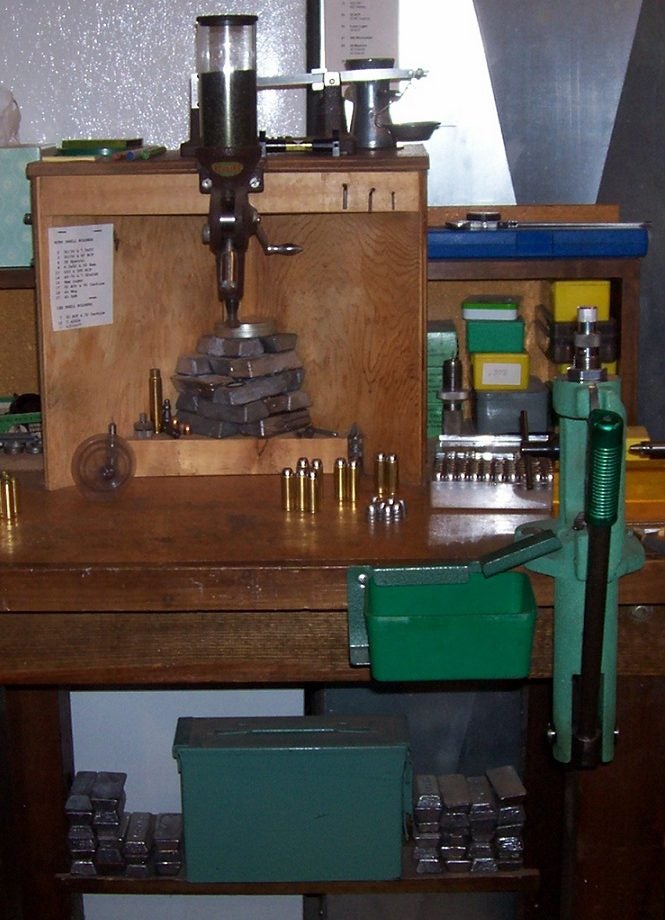
Thanks for the tip and photo, Paul!
Okay, now let’s get started. First, the casing needs to be expanded for the bullet. Expanding allows the bullet to be evenly placed in the casing
Neck Expansion
We will initially fit the expander die a little different then the resizer die. First, completely remove the expander plug. Next, put the press in its highest position (with a shell holder in place), screw the die until it lightly touches the shell holder. Tighten the lockring. Place a resized casing in the shell holder and raise it all the way up into the die. Now, screw in the expander plug until you feel it touch the casing. From here the more we screw it down the more we expand the neck. The trick is to expand enough for the bullet to push down easily into the case. I have found the sweet spot is where you can feel the expansion, but not really see it.
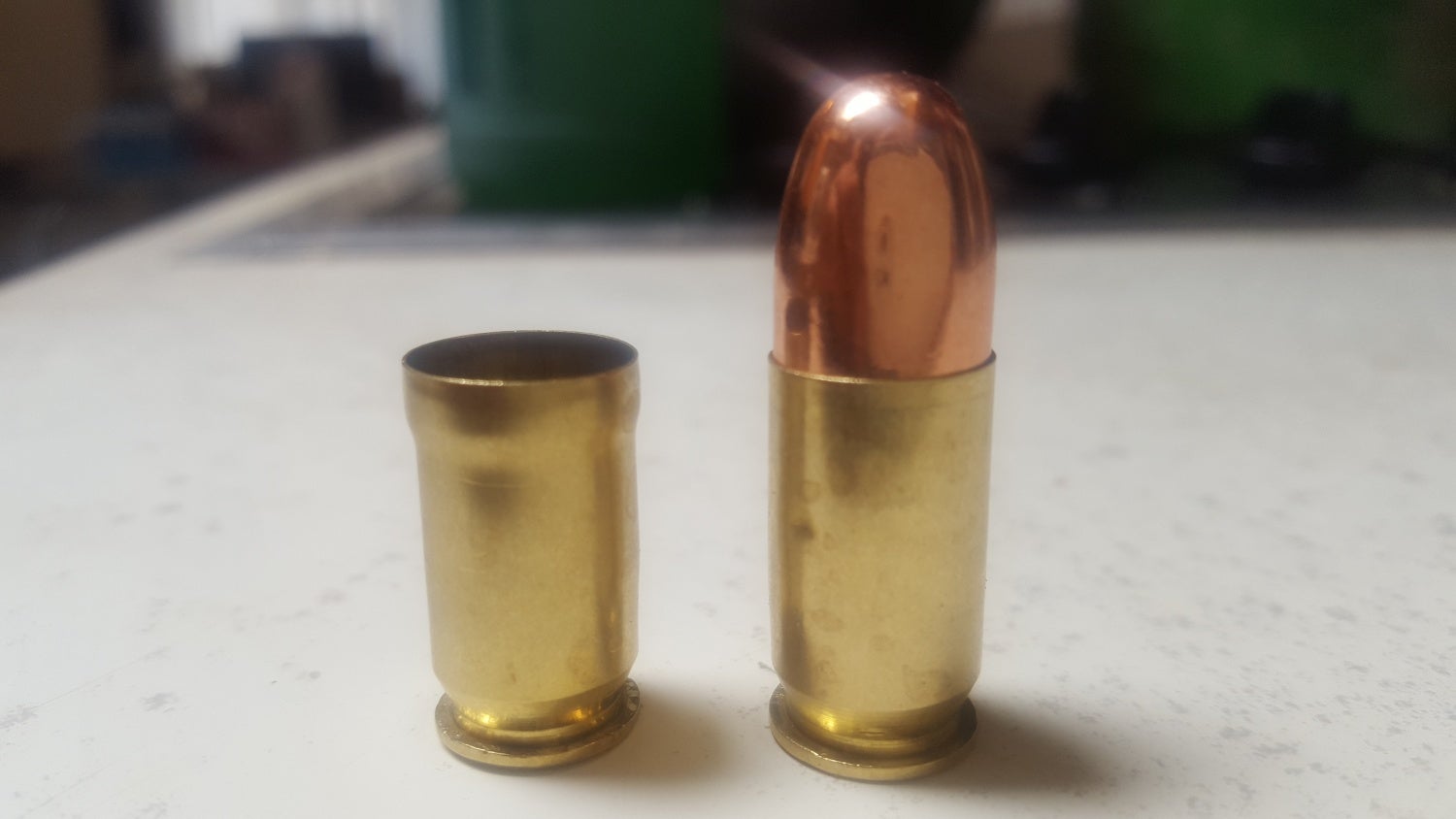
On the left, I over expanded as an example. On the right, it is appropriately expanded.
Repriming
When you check your manual, you will see that .45 ACP takes a large pistol primer. A number of manufacturers have started making .45 with small primers. Irrelevant if you’re buying and shooting the ammo, but when reloading it becomes pretty important. Remember when I wrote about brass inspection? This also a point we will look for. Squeezing a large primer into a small hole might cause the primer to pop off, therefore we will separate large from small primers. Many will reload the small primer .45. We are beginners here, so we will save that brass for later, or discard. Again, every time you pick up brass throughout this process, LOOK IT OVER AND INSPECT IT.
Following the inspection of the brass, and sorting the small primers, we will set up our priming tool. A number of different priming tools are on the market. Our sponsor of this series, Lyman, sent us their hand primer. Hand primers are pretty easy. Put primers in the tray, SLIGHTLY shake it until they are all open side up.
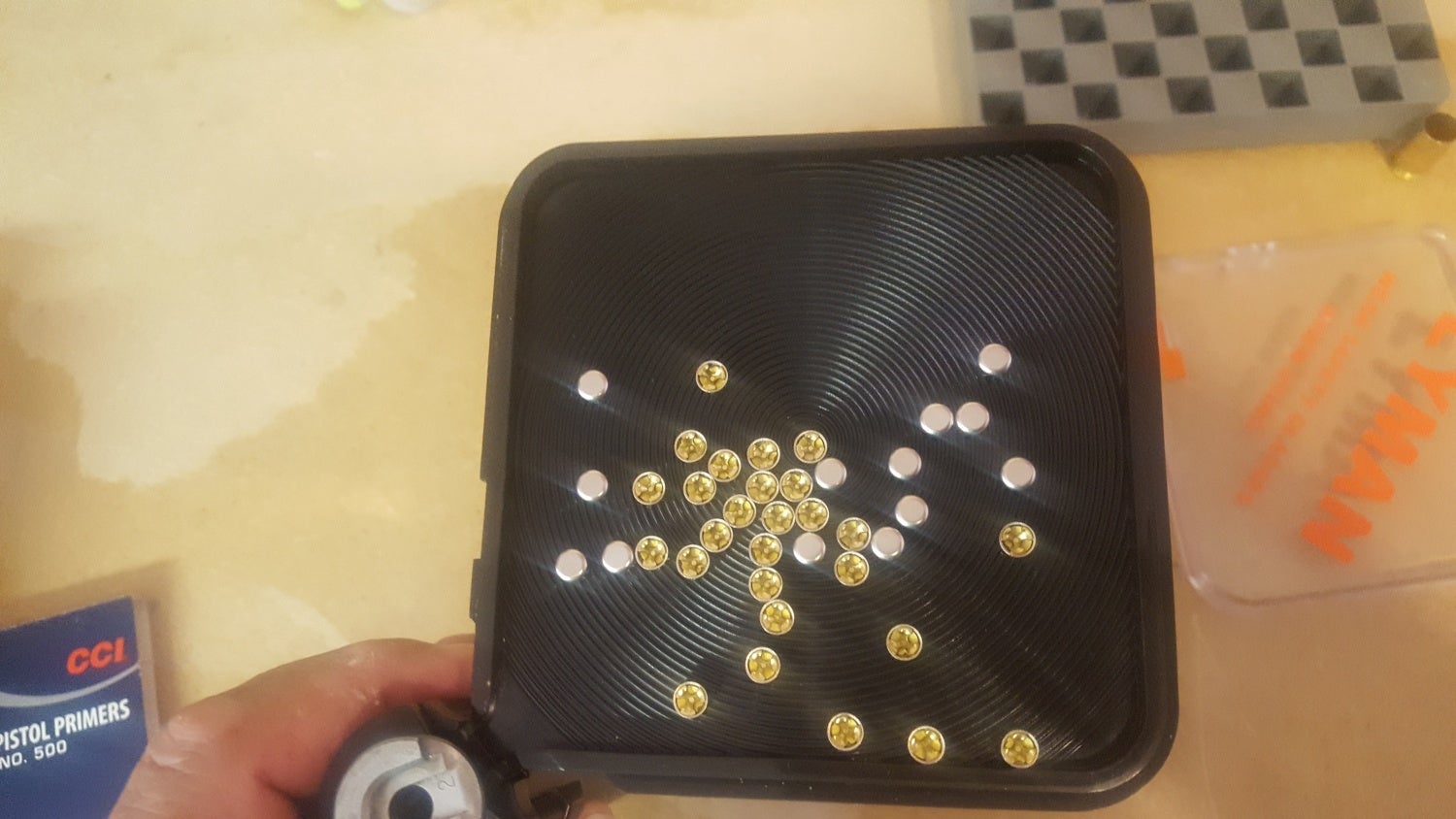
What you see initially when placing primers
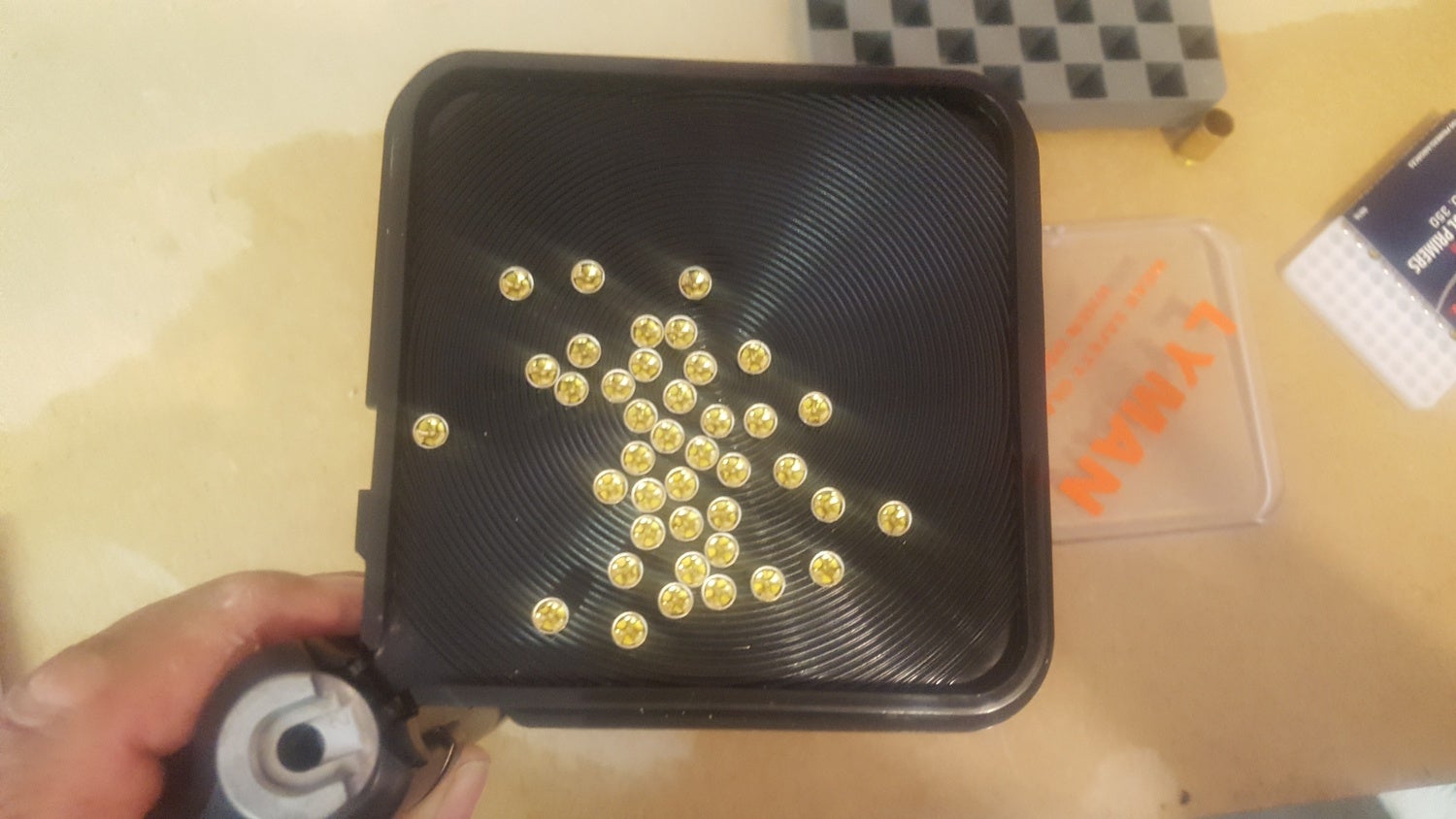
The ribbed bottom will roll the primers over with slight shaking
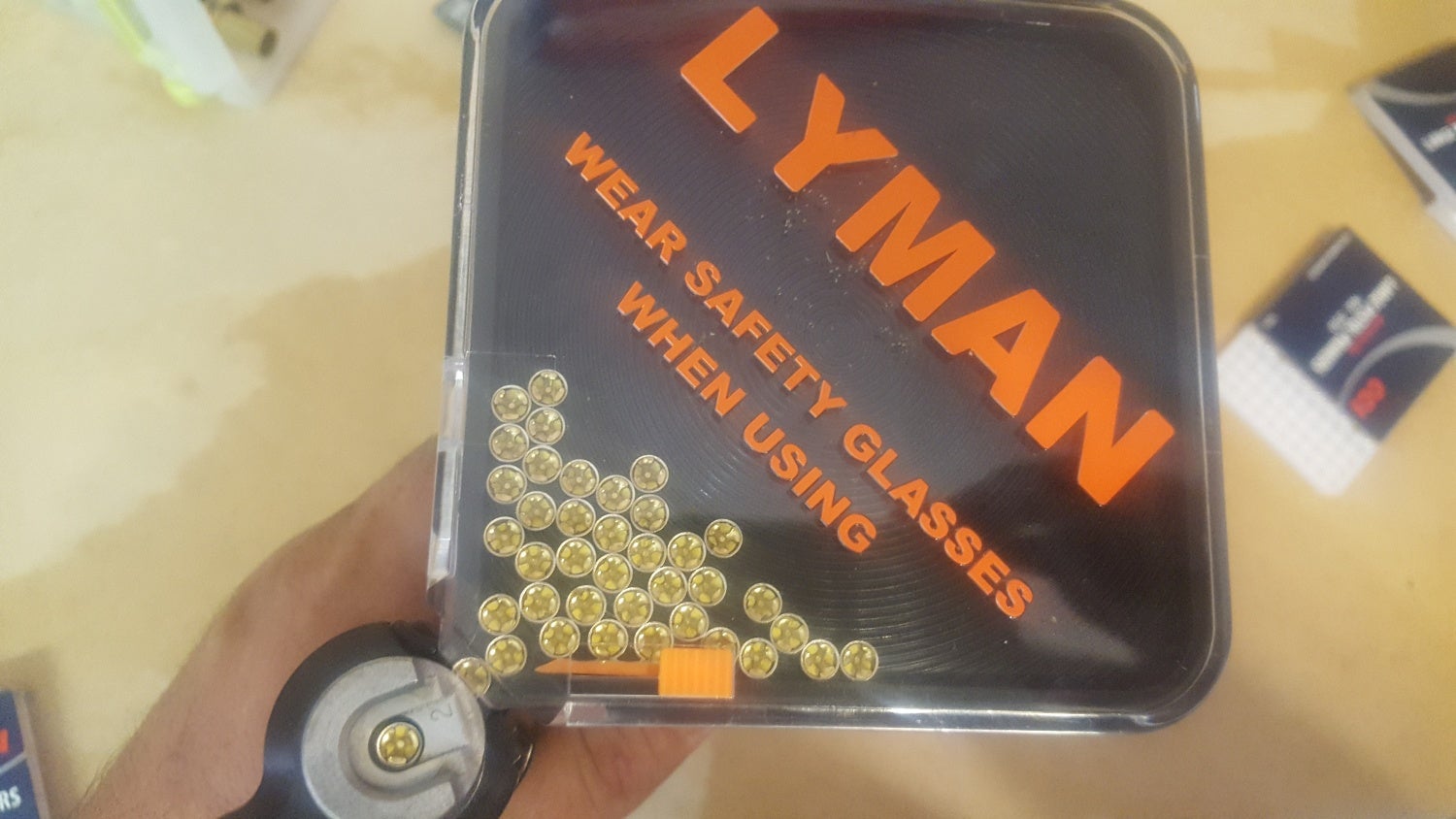
The primer is ready to slip into the case
When the primers are all right side up, put the cover on. With another small shake, a primer will slide into the priming slot. Squeeze the handle to raise it a touch, visualize it to see it is right side up. Place a casing in the case holder and slide the primer in (don’t ram it in, like on prom night).

Two most common errors: the first is upside down, second jammed in sideways. I use a hand de-primer, but passing them through the resizing die will work. Small chance the primer might pop off; be ready
Gun Powder
The soul of our “pew”! Don’t be intimidated by handling gunpowder, just be responsible. The first time I bought powder it felt like transporting unstable explosives. Pretty soon I relaxed and did not worry as much. My point is, I never stop being respectful of gunpowder. It is stable and safe, as long as YOU are safe and responsible. Clean your area, don’t smoke, keep any source of ignition away from your workspace. Don’t mix powders, and sweep up spills, don’t clean area with solvents until all the powder is swept up. When storing powder keep the lid on tight and a temperature semi-regulated area. Somewhere that does not get way hot or way cold. I never put the powder in my safe; I keep it in large plastic tubs.
Powder Dumping
Lyman provided me with their Brass Smith Powder Measurer. I find easy it easy it set up and easy to clean. For plinking ammo, it is more than consistent enough. Even after setting this up I remeasured every 10 dumps. I also remeasure if I add powder. Here a reloading tray comes in useful. It keeps the cases upright and in order. Once you start dumping powder, it is best to not stop. Here is where distractions have the most potential for a dangerous outcome. One danger is the “double-dump”. A pistol case can easily hold a double load and still easily seat the bullet. This can be a catastrophic event when the round is fired. The other is loading a bullet into a case without powder, creating a type of squib.
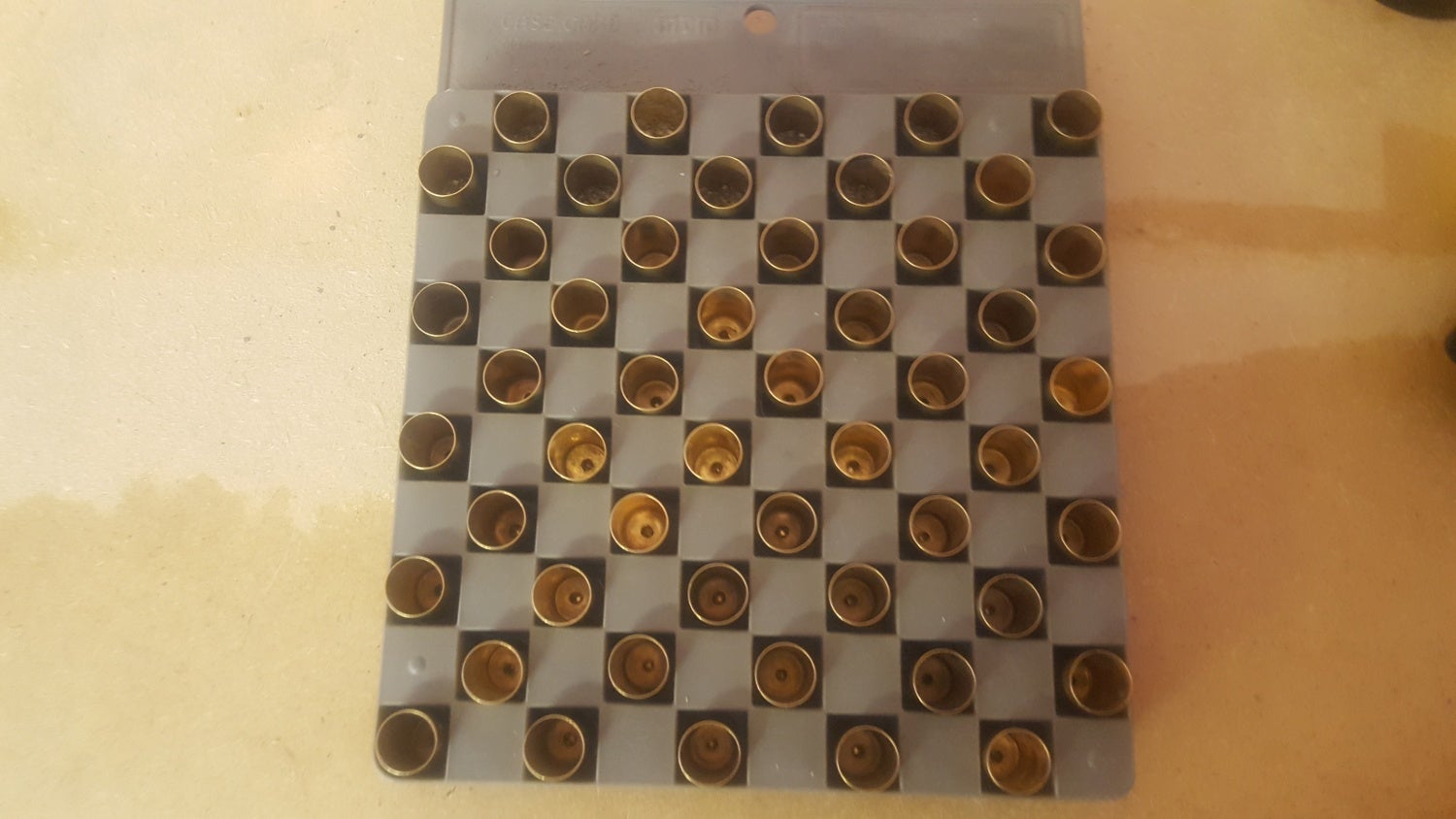
A tray keeps the cases safe, together and upright
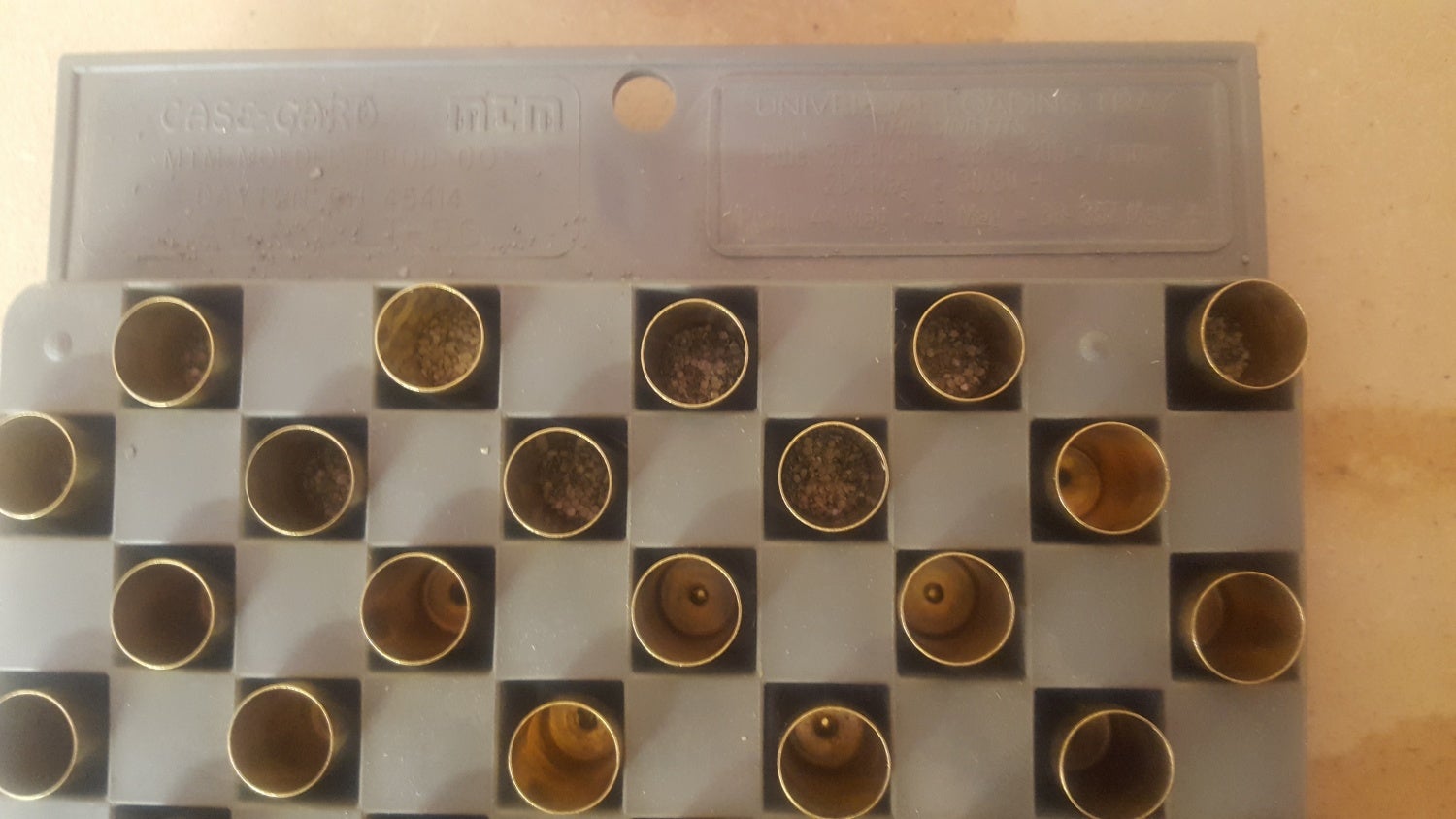
Visually inspect the loads for an overfilled case
All that is left is seating the bullet which we will cover next week
As always, please leave some comments below and feel free to ask questions!
READ PART 4 HERE
 Your Privacy Choices
Your Privacy Choices
